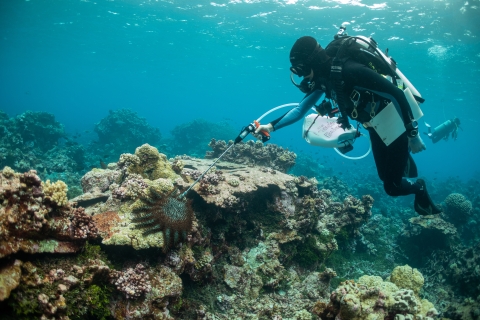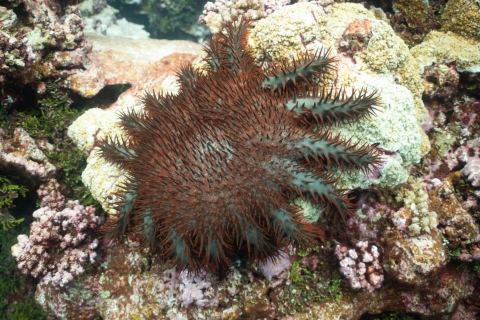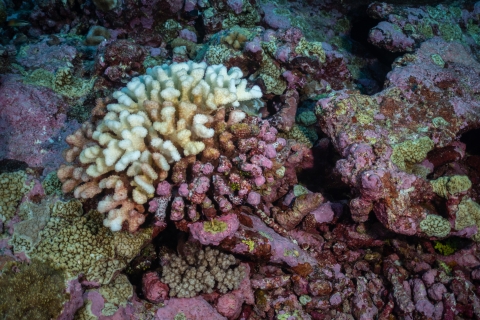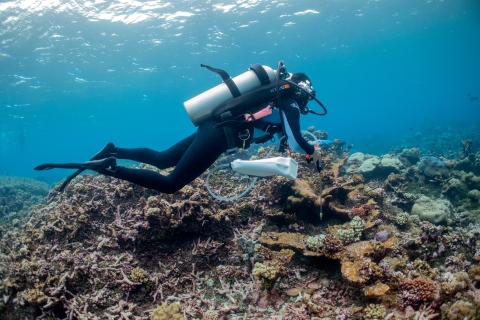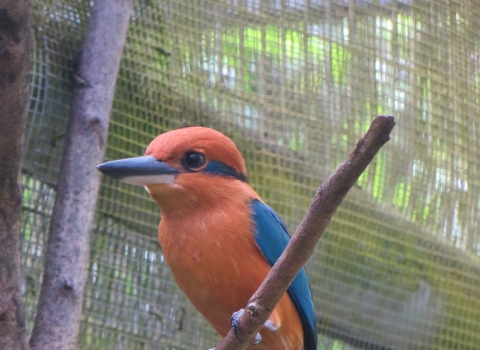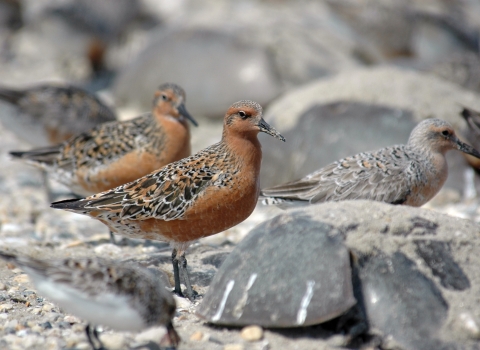To find the spiked, predatory starfish, divers in the middle of the Pacific Ocean looked for the bright white feeding scars on the coral.
Find the scars and they might find the culprit: the crown-of-thorns starfish.
In April, a U.S. Fish and Wildlife Service dive team was dispatched to Palmyra Atoll, about 1,000 miles south of Hawaiʻi, to seek, count and systematically disrupt the native-but-destructive marine invertebrates.
The crown-of-thorns starfish, known by ocean conservationists as COTS, is one of the largest sea stars in the world. If it were an actual crown, the head it sat upon would need to be 10-30 inches in diameter.
When they congregate in large numbers on a coral system, the results can be devastating, as documented across the Indian and Pacific oceans, including at the Great Barrier Reef.
“That starfish is almost like a locust on reefs when it gets out of control,” said Nancy Knowlton, chair of marine sciences at Smithsonian National Museum of Natural History, in an interview about COTS on the “PBS NewsHour.”
“A swimmer can see a hundred or even over a thousand in a 20-minute swim when you have an outbreak going on, and they can kill up to two-thirds of a reef just in a year when that happens,” added Knowlton in the 2012 interview.
Crown-of-thorns starfish outbreaks are one of the major causes of coral decline across the Great Barrier Reef over the past 40 years, according to the Australian Institute of Marine Science.
And the outbreaks are becoming more frequent in more places, even at the remote Palmyra Atoll National Wildlife Refuge where an outbreak began in 2017.
Thankfully, COTS is one threat to coral that can be treated.
The USFWS divers at Palmyra carried bags of household vinegar and special injector guns during their pilot study. The vinegar injections quickly cause organ failure for COTS but are harmless to other marine organisms, according to Amanda Pollock, who helped lead the USFWS dive team.
The goal was not eradication but rather to reduce COTS numbers back to their natural, pre-outbreak levels, said Pollock.
“COTS are native to Palmyra, and when in low numbers, they are an important part of the coral reef ecosystem, helping to increase the diversity of corals on the reef,” explained Pollock.
During their countless dives ranging in depth from 3 feet to 100 feet, the team was able to treat about 200 acres of coral reef.
Based on the success of the first pilot project, there are plans for two more follow-up missions in 2024, so Palmyra can continue to be known for its healthy, thriving coral reefs.
“The reefs of Palmyra have been shown to be resilient after past bleaching events, and our hope is that if we knock the COTS population back to normal levels, Palmyra will take care of the rest,” said Pollock.

